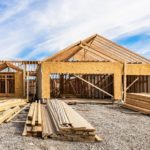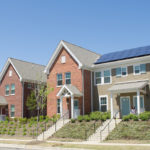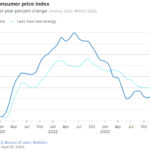With steady job growth, mortgage rates near record lows, and escalating rental costs nationwide, the market is favorable for first-time home buyers—yet their share of overall purchase activity this year is approaching a 36-year low, according to the National Association of REALTORS®’ 2017 Profile of Home Buyers and Sellers. First-time buyers accounted for 34 percent of home sales this year, the fourth lowest share since 1981. It’s not because first-timers lack interest in purchasing a home; they can’t find enough available inventory in entry-level and affordable price points, NAR reports. Transactions to first-time buyers have a long-term average of 39 percent.
“The dreams of many aspiring first-time buyers were unfortunately dimmed over the past year by persistent inventory shortages, which undercut their ability to become homeowners,” says NAR Chief Economist Lawrence Yun. “With the lower end of the market seeing the worst of the supply crunch, house hunters faced mounting odds in finding their first home. Multiple offers were a common occurrence, investors paying in cash had the upper hand, and prices kept climbing, which yanked homeownership out of reach for countless would-be buyers.”
This is occurring despite solid economic conditions and an increasing number of millennials who are entering their prime buying years, Yun adds. This “should be translating to a lot more sales to first-timers, but the unfortunate reality is that the nation’s homeownership rate will remain suppressed until entry-level supply conditions increase enough to improve overall affordability.”
Millennials are burdened with more student loan debt, which is complicating their financial health. Forty-one percent of first-time buyers say they have student debt, with the typical balance increasing from $26,000 in 2016 to $29,000 in 2017, according to NAR. More than half of borrowers owe at least $25,000. Such debt is prompting millennials to delay homeownership by an average of seven years, NAR found in a separate study earlier this year.
“Even in markets with a plethora of job opportunities and higher pay, steep rents and home prices make it extremely difficult to put savings aside for a down payment,” Yun says. First-time buyers put down an average of 5 percent on a home purchase this year, down from 6 percent in 2016 and matching the lowest level since 2013, according to NAR. On the other hand, repeat buyers, who are selling at large profits thanks to steep growth in home prices, are putting down an average of 14 percent, up from 11 percent last year.
 Source: “2017 Profile of Home Buyers and Sellers,” National Association of REALTORS® (Oct. 30, 2017)
Source: “2017 Profile of Home Buyers and Sellers,” National Association of REALTORS® (Oct. 30, 2017)
 Source: “2017 Profile of Home Buyers and Sellers,” National Association of REALTORS® (Oct. 30, 2017)
Source: “2017 Profile of Home Buyers and Sellers,” National Association of REALTORS® (Oct. 30, 2017)












